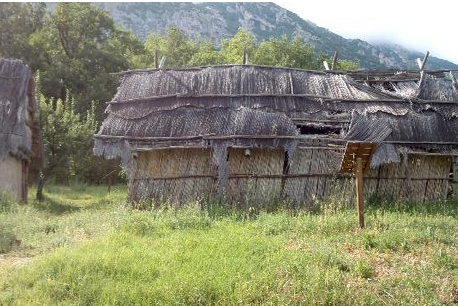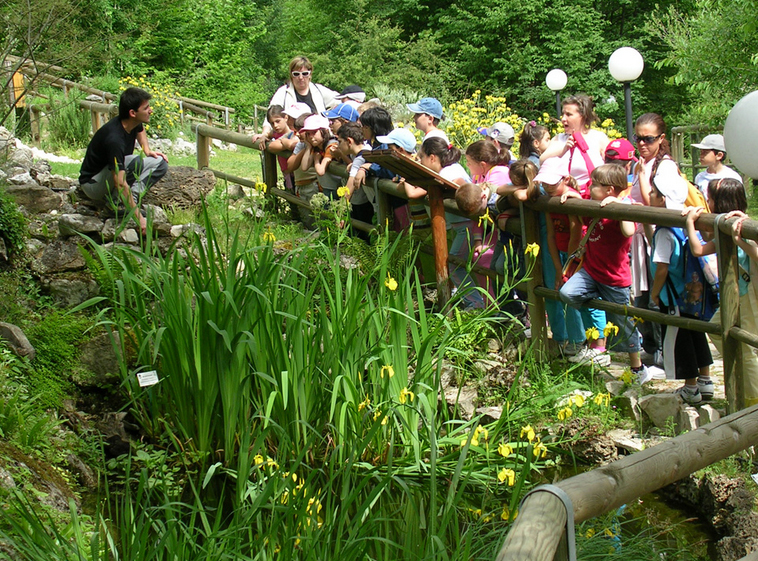
Giardino Botanico Michele Tenore
This post is also available in:
 Italiano (Italian)
Italiano (Italian)
Giardino Botanico Michele Tenore is located in the province of Chieti, within the Majella National Park and was recognised as a garden of Regional Interest by Regione Abruzzo. It was created in 1995 together with M. Locati Naturalistic Museum, thanks to an initiative of the municipality; it’s management has been entrusted to Ente Parco since 2000. Majealla’s cornflower (Centaurea tenoreana) is the symbol of the garden, a native flower of eastern Majella dedicated to the Neapolitan botanist Michele Tenore, who visited this territory in 1831 finding unknown species. The garden was created with the aim to promote native plants and, over time, it has gained a fundamental role in the safeguard of rare or endangered species. This made Ente Parco a founding member of Rete Italiana Banche del germoplasma per la conservazione ex situ della flora italiana (RIBES – Italian Germplasm Resources Information Network). The garden now hosts about 500 species on a surface of 9000 square metres and is divided into sections reproducing plant habitats of the Majella, with species of the Central Apennine or exclusive of Majella and the surrounding mountains, besides the recreation of forest habitats typical of the Park territory, such as the beech and Turkey oak forest, Orno-ostrietum and the oak forest (Quercus pubescens). A section of the garden is dedicated to the recovery of cultivars, thanks to an orchard with about 20 local varieties of fig, peach and plum tree.
Sections of the garden
The location of the Botanical Garden, on the eastern side of Majella, encouraged the creation of different environments, such as low altitude cliffs and screes: they host various native plants, among which Campanula fragilis subsp. cavolinii, Iris marsica and Astragalus aquilanum, together with species that can be found on either side of the Adriatic Sea like Saponaria bellidifolia and Drypis spinosa.
Another representative environment, degrading into a garrigue, is the Mediterranean shrub hosting Quercus ilex, Arbutus unedo and Rhamnus alaternus, but also small colourful shrubs like pink and white rockrose, aromatic plants like Satureja spp. and Helichrysum italicum, and many species of Asphodelus spp.
Neolithic rural landscape: besides huts created with plant material, hearth and manure, some sections with varieties of cereals and legumes (like Lathyrus sativus, Vicia ervilia and plants used for oil extraction like Cannabis sativa, Linum usitatissimum and Papaver rhoeas) were recreated.
Officinal plants: it hosts plants once used in the area of Lama dei Peligni, known as “the magari’s land”, that is warlocks.
This post is also available in:
 Italiano (Italian)
Italiano (Italian)
Contatti
Lama dei Peligni()
0872 916010
info@parcomajella.it
Altre info
Biglietto Giardino e Museo: 3,00 euro; ridotto (7-14) 1,50 euro; gratuito per bambini (0-6) e over 70
Dal martedì al sabato.
10:00-13:00; da aprile a giugno anche domenica e festivi 10:00-13:00 e 16:00-19:00



